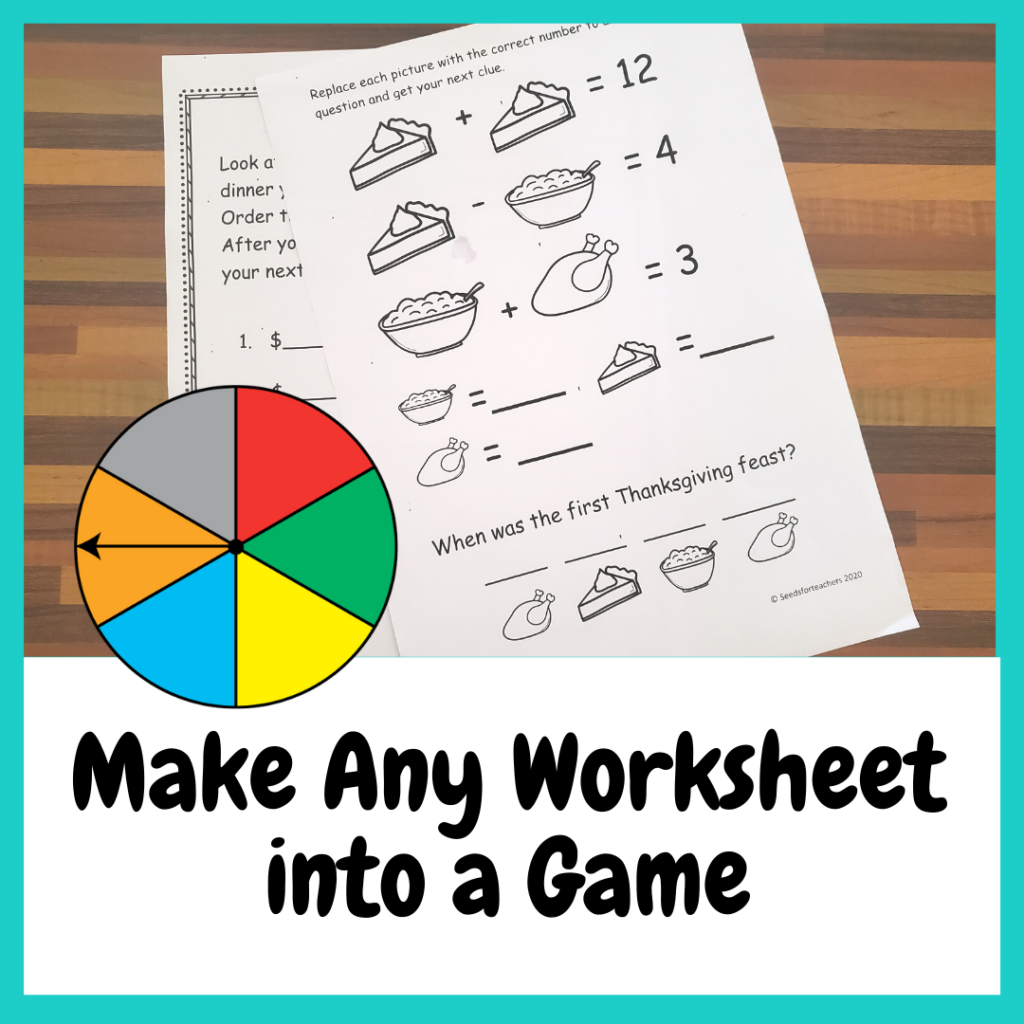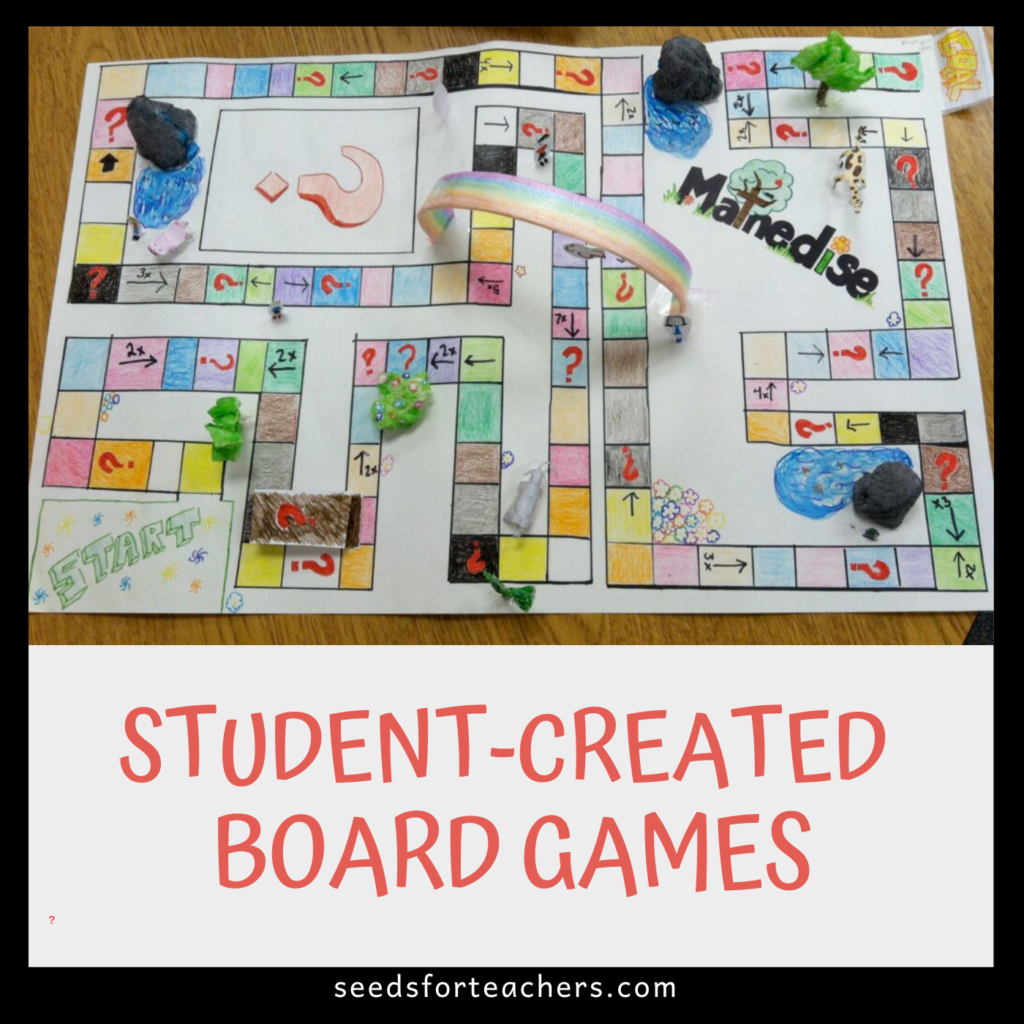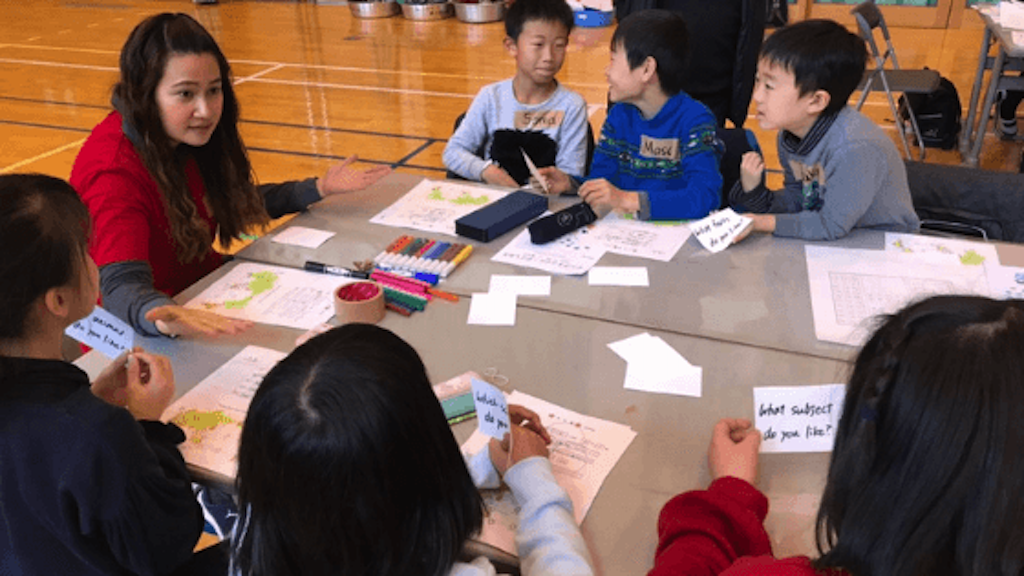Inquiry-based teaching is a pedagogical approach where rather than the teacher directly teaching academic content, he or she invites students to explore the topic by posing, investigating, and answering questions.
There are several types of inquiry-based learning that range from very structured to completely open and driven by the student. In my post how to plan for inquiry-based learning I mentioned that the first step in any inquiry-based teaching method is usually having students observe the topic somehow. Each of the 10 structured inquiry activities below achieve this.
1. Observe Photos
This type of structured inquiry involves students looking at pictures in order to answer a question. The pictures might be in a book or printed out for learners.
Below, I showed “pictures” (in this case cut out shapes) of various triangles and had the students try to define what a triangle is. I made sure that my examples included various size triangles and the different types (obtuse, acute) not just the typical equilateral triangle.
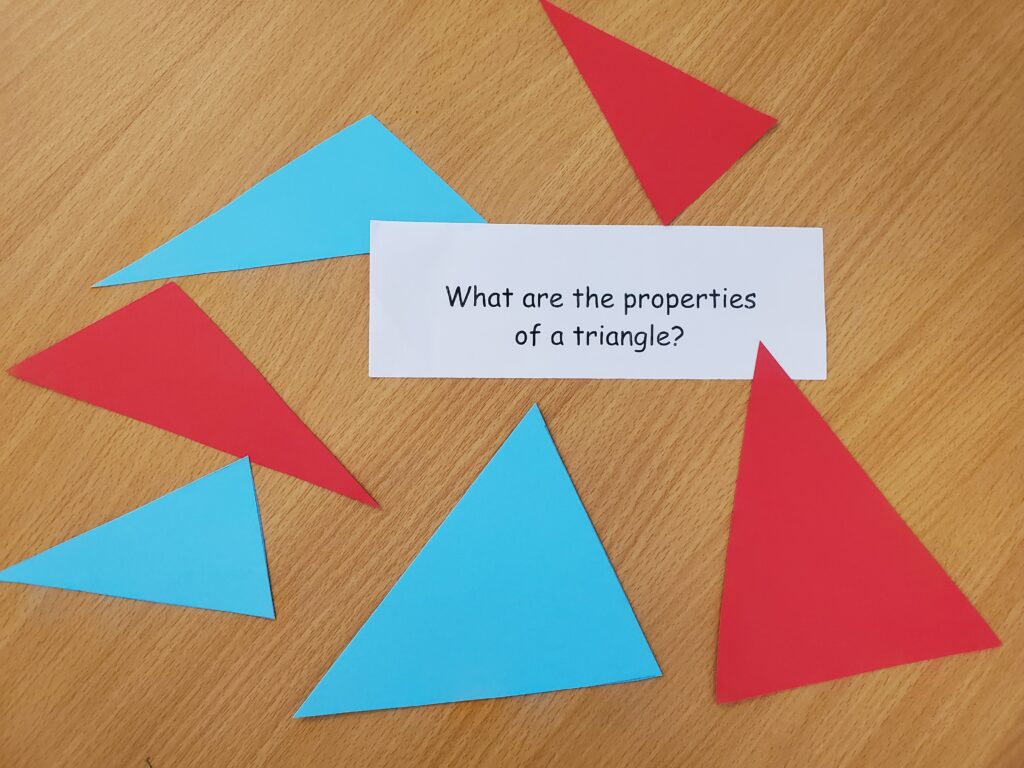
Other questions that could be answered by observing photos:
What is a rainforest?
How are plants and animals different?
What are the properties of a triangle?
Identify the parts of a plant.
What are some key aspects of Asian culture?
2. Observe Examples
Observing examples can be really helpful in math or language. As you provide them with carefully chosen examples they can identify the pattern within all the examples.
Below I provided examples of squares and rectangles where the area has been calculated. I then asked the students to “work backwards” and try to figure out how the area was calculated.
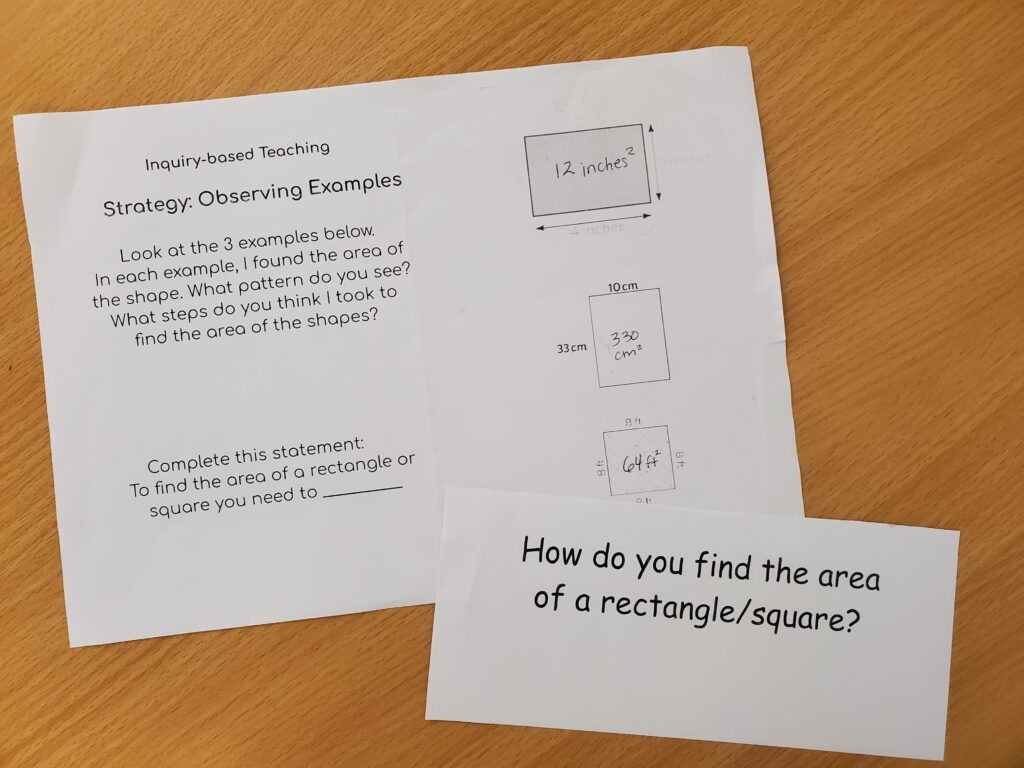
Another option is in English. Let’s say you are trying to introduce what an adjective is. List 10 adjectives on the board and ask students, “If all of these words are adjectives, what do you think an adjective is?”
Other questions that could be answered by showing examples:
What is a prime number?
What are the common characteristics of desert plants?
3. Experience It or Something Similar
This one may seem similar to the experiment or test it out but the question you are trying to inquire about is slightly different. The whole purpose is about what you experience not necessarily the end result. So you might be investigating how our body changes during exercise. Take your students out and have them exercise/run around the field for 10 mins and then make observations about their body and the body of their friends. What do they notice? Another fun one I used to love is mimicking the digestive system with this fun activity. Each part of the activity is designed to help students see and experience what is happening at each stage in the digestive system.
4. Test it Out
An example of the test it out strategy would be in P.E. or Science. Let’s say the students are investigating how exercise affects our bodies. The teacher might have them go outside and run around for 10 minutes then ask what has changed in their bodies.
Other examples:
How do we get the color orange? students mix various colors of paint or colored water together until they discover how to get orange.
Does the sun affect evaporation rate?
Does it matter what order we calculate a math equation such as 2 +5 x 4? Have them test adding 2 + 5 first before multiplying and then have them test multiplying 5 and 4 first and then adding 2.
5. Surveys
Surveys are another way for students to pick up on patterns. For example, let’s say you are trying to explore how technology has impacted our world. You could have students survey three people from different generations and ask them questions like: what technology did you have access to as a child? What did you do if you needed to find the answer to a question? What did you do for fun as a child? People from different generations will have very different answers to these questions. Students can then make statements about how technology has made an impact.
6. Interviews
Interviews can be a way of discovering various points of view. The teacher could bring in special guests for the class to interview or assign students to go an interview someone outside of school. You can also find videos online of people sharing their opinion or being interviewed.
7. Observe Non-Examples
In the same way as you can look at examples to see patterns, you can also look at non-examples and compare them to whatever you are inquiring about it.
Below I provided a few examples of fiction books and a few examples of nonfiction books and asked students, “Do nonfiction book covers look different from fiction books?”
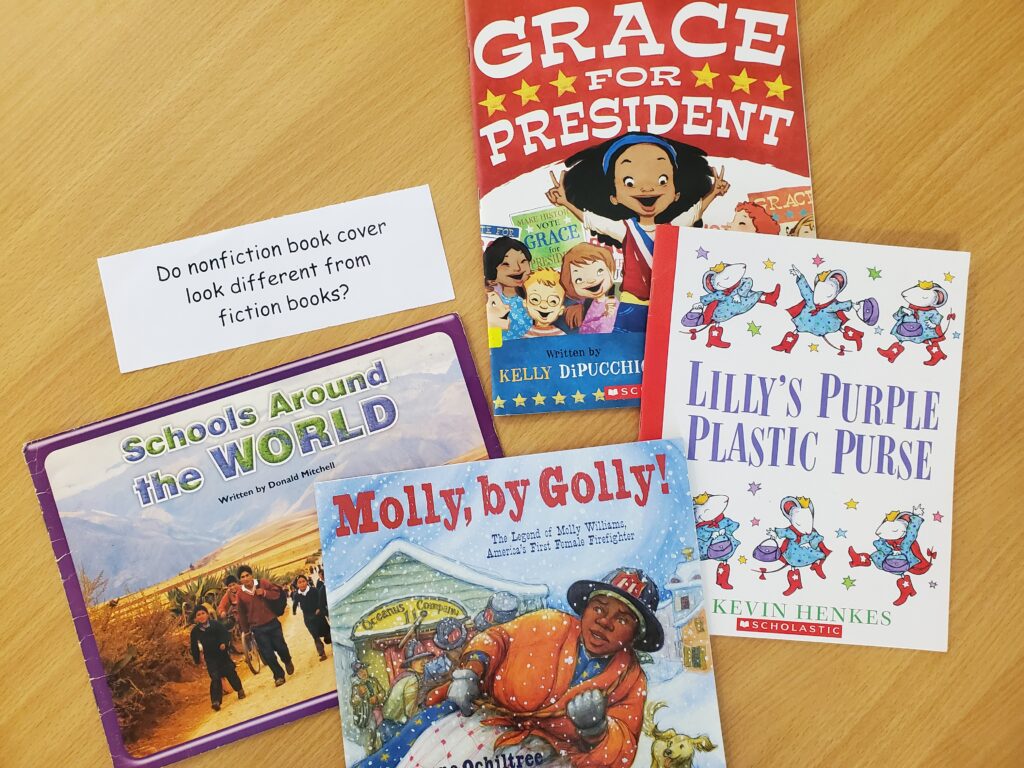
8. Collect Data
Collecting Data doesn’t just have to be a math task. You could collect data when inquiring about how different types of food effect our body. Have students record what they are eating for a week and then an hour later record how they are feeling and when they feel hungry again. You could also collect data about the climate of your town by recording temperatures and weather for a period of time.
9. Conduct an Experiment
I put this one down towards the bottom of this list because it is one of the most commonly known ways to support inquiry. Conduct and experiment to answer the following questions:
Do all liquids mix together the same way?
How does temperature effect the rate of evaporation?
10. Research
Again, this is a common way most teachers support inquiry in their classroom. However, logging on to the computer and asking google a question, isn’t really inquiry. It’s just using google as a teacher instead of the classroom teacher. Yet, research CAN be a tool for supporting inquiry IF used correctly.
The important thing to remember when using research for inquiry, is what type of question students are researching? With any inquiry task you want to aim for those higher level questions. Questions that start with words like “why”, “how”, “what’s the difference” etc. That way when students research about a certain topic online, they have to them take that information and push further. The answer won’t come simply by typing the question into google.
Let’s look at some examples that are NOT supporting true inquiry:
What is an adjective?
Why does a volcano errupt?
What are 5 famous places in China?
Each of these questions could be typed into a search engine and I would find a site with the exact answer. Students would simply need to read the answer and write it down. Remember, that true inquiry means the students are discovering answers on their own. They are asking questions and trying things out. Reading the definition of an adjective on the computer is no different that the teacher writing the definition of an adjective on the board.
Better questions to evoke inquiry include:
How is Rwandan culture different from Chinese culture?
Why is technology so important to our lives?
Which natural phenomenon is the most dangerous?
If you’d like to read more about how to plan for inquiry check out that post. I prepared a little “cheat sheet” with all the examples of supporting inquiry above plus a few more. Click on the button and download it for free!
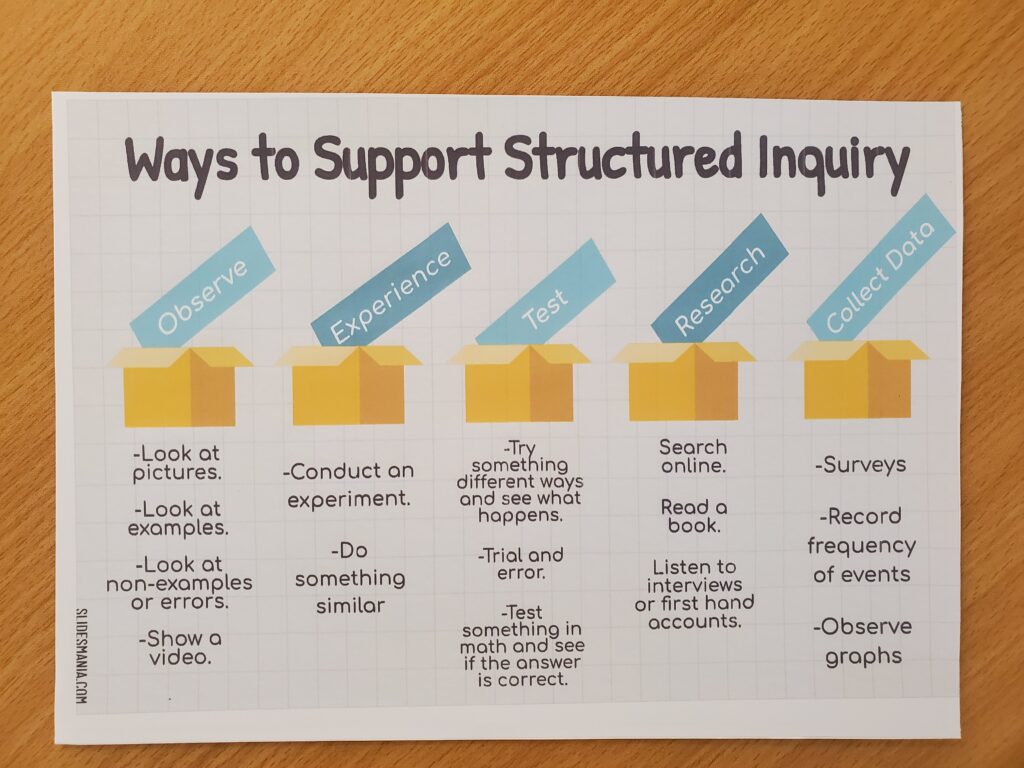
Other posts you might like:

